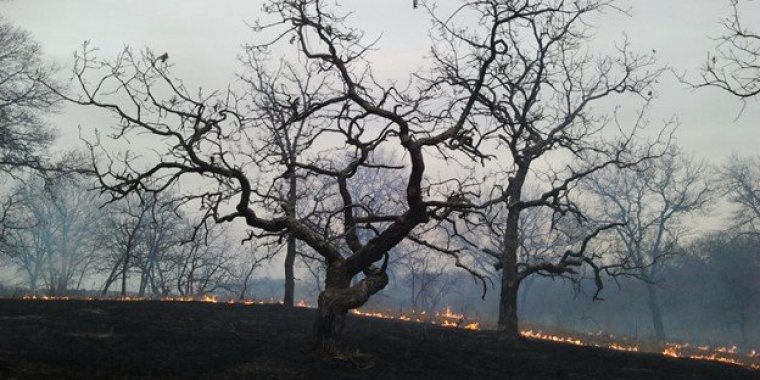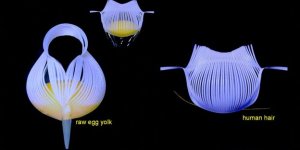| News / Science News |
Plant disease outbreaks may be curbed by periodic wildfires
Wildfires have made headlines worldwide in recent years. Evidence points to wildfires increasing in frequency and intensity across vulnerable ecosystems as climate change impacts grow more evident. But periodic wildfires in ecosystems adapted to them can help inhibit plant disease outbreaks, according to research by scientists affiliated with the U.S. National Science Foundation Cedar Creek Ecosystem Long-Term Ecological Research site in Minnesota.

Savanna bur oaks during a spring burn at the Cedar Creek Long-Term Ecological Research site. Photo: Susan Barrott
Interactions between disturbances like fire and disease are likely to impact whether an ecosystem changes state, such as from a woodland to a grassland. But such interactions have rarely been studied over long periods.
Researchers surveyed vegetation plots at Cedar Creek for 35 years as part of a fire frequency experiment that has been maintained for more than a half-century.
The temperate oak savanna–forest ecotone that comprises the plots recently experienced an outbreak of a fungal pathogen called oak wilt.
In the absence of disease, tree population sizes were strongly influenced by fire frequency, with unburned plots transitioning from savanna to forest, while intermediately and frequently burned plots remained savanna.
However, oak wilt rapidly reversed the effect of fire exclusion, increasing mortality by 765% in unburned forests while having relatively minor effects in frequently burned savannas.
The savannas include two main tree species: Quercus ellipsoidalis (red oak group; northern pin oak) and Q. macrocarpa (white oak group; bur oak). At Cedar Creek, oak wilt, or Bretziella fagacearum, has spread rapidly in the last decade, leading to exponential increases in tree mortality, particularly of red oaks.
Trends in tree populations changed strikingly from 2010 to 2018, with rapid declines in tree biomass in several plots, coinciding with the outbreak of oak wilt.
Disease invasion decreased tree biomass, increased light penetration and grass cover, and shifted tree populations from being dominated by fire‐resistant adults to fire‐sensitive saplings, especially in the unburned plots. (National Science Foundation)





